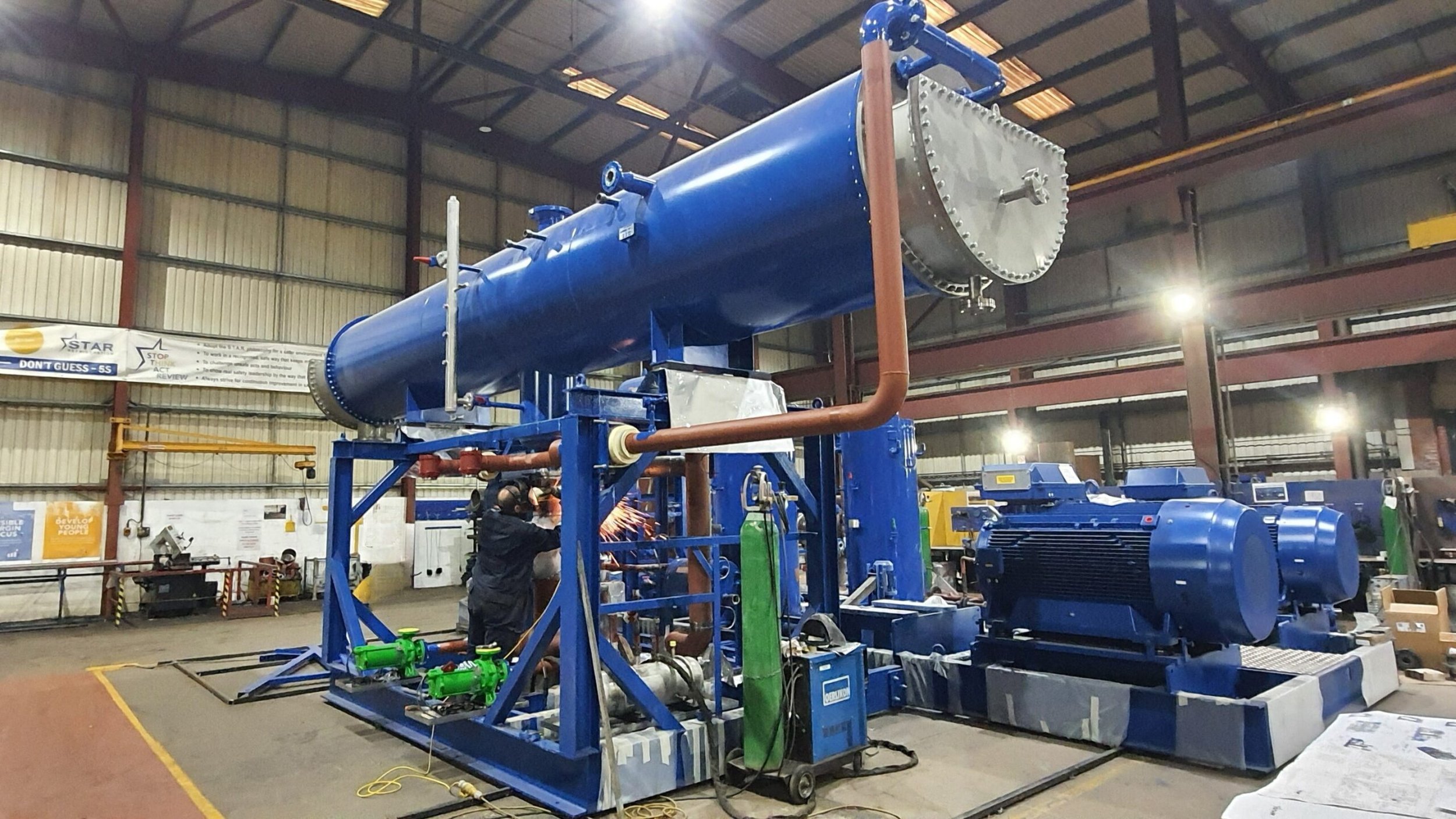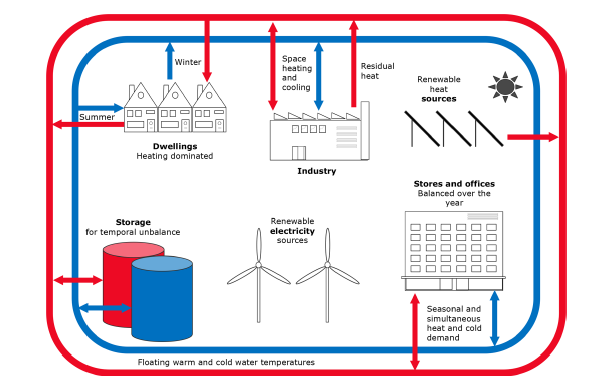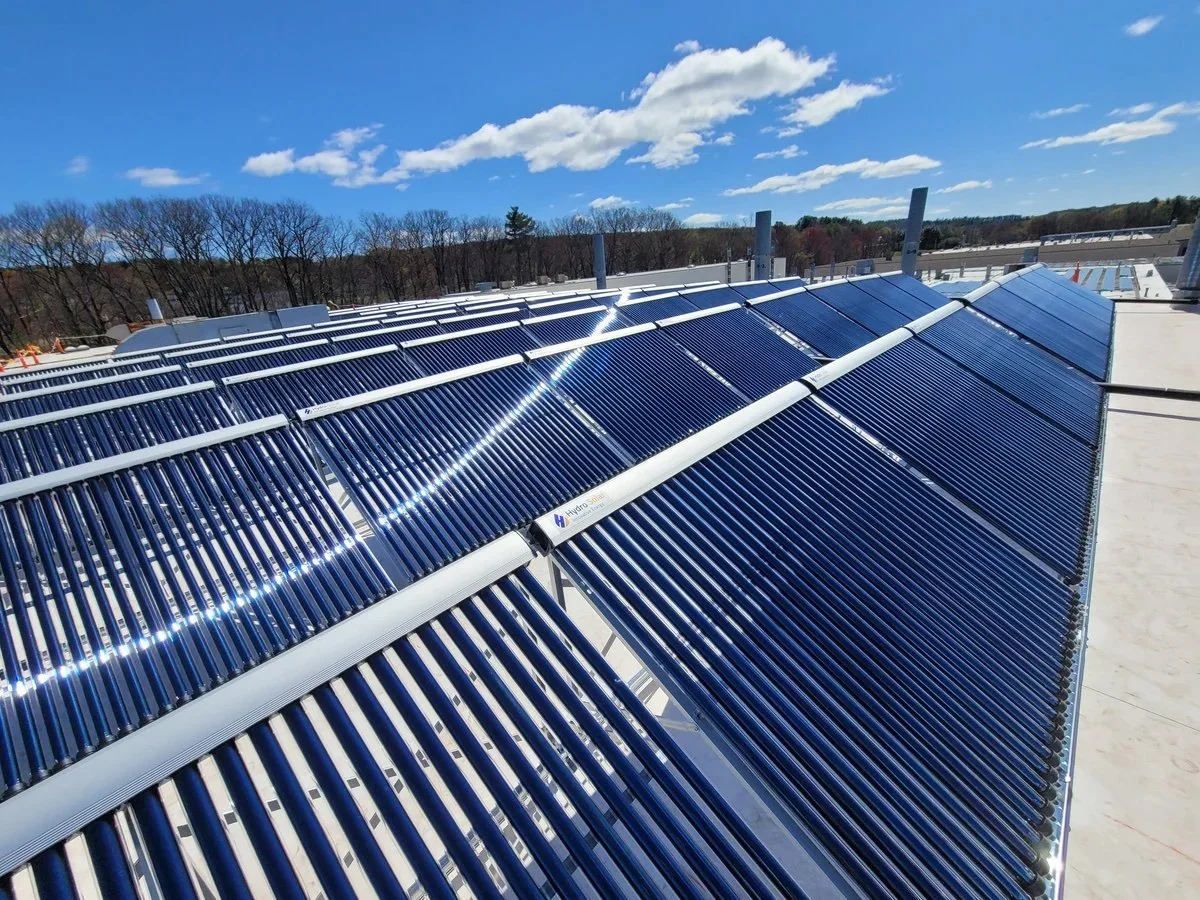
By Design Tech Solutions — Optimising Heat Pump Use in Network Design
Introduction: The Rise of Heat Pump-Led Networks
Heat pumps are a key enabler of low-carbon heat — and for many schemes, they’re now the preferred primary heat source.
But integrating heat pumps into a district energy system isn’t as simple as plugging one in. From flow temps and COP to control logic and sequencing, heat pump-led networks need smart planning.
At DTS, we help design heat pump systems that work — on paper, on site, and over the long term
Why Use Heat Pumps in Heat Networks?
Low-Carbon Heating
ASHPs and GSHPs run on electricity and have high seasonal efficiency — especially when paired with low-flow-temperature networks.
Reduced Operational Emissions
They drastically reduce reliance on fossil fuels, supporting PSDS, LEVI, and BREEAM goals.
Flexible Sizing & Zoning
Heat pumps can be deployed at central, block, or building level — with zoning and smart control to match.
Great for New Developments
They’re ideal for new builds designed around low-return temps and good insulation.
ASHP vs GSHP – What's the Difference?
Air Source Heat Pumps (ASHPs) extract heat from the ambient air and are typically faster and easier to install. They’re ideal for compact sites, rooftops, or developments without available ground area. Seasonal efficiency (COP) typically ranges from 2.5 to 3.5. However, they require careful planning around noise, frost protection, and external unit placement.
Ground Source Heat Pumps (GSHPs) draw energy from underground loops or boreholes. They’re more efficient long-term (with seasonal COPs of 3.5 to 4.5), but require more upfront investment and groundworks. GSHPs work well for larger estates or where long-term energy savings are prioritised.
Both can be integrated into district heating — and in some cases, a hybrid approach can combine the strengths of each.
FAQ
Ideal Applications
New residential and mixed-use developments
Public sector schemes targeting Net Zero
Housing estates with decentralised plant
Sites with solar PV or battery for low-carbon electricity
Let's Put Heat Pumps at the Heart of Your Network
Whether you’re decarbonising a new site or upgrading a legacy network, DTS helps make heat pumps work — in practice, not just on paper.
RELATED READS
Explore our detailed guides on designing effective, future-ready district heating systems. Each article is written to help clients, developers, and stakeholders understand what great network design looks like in practice.







